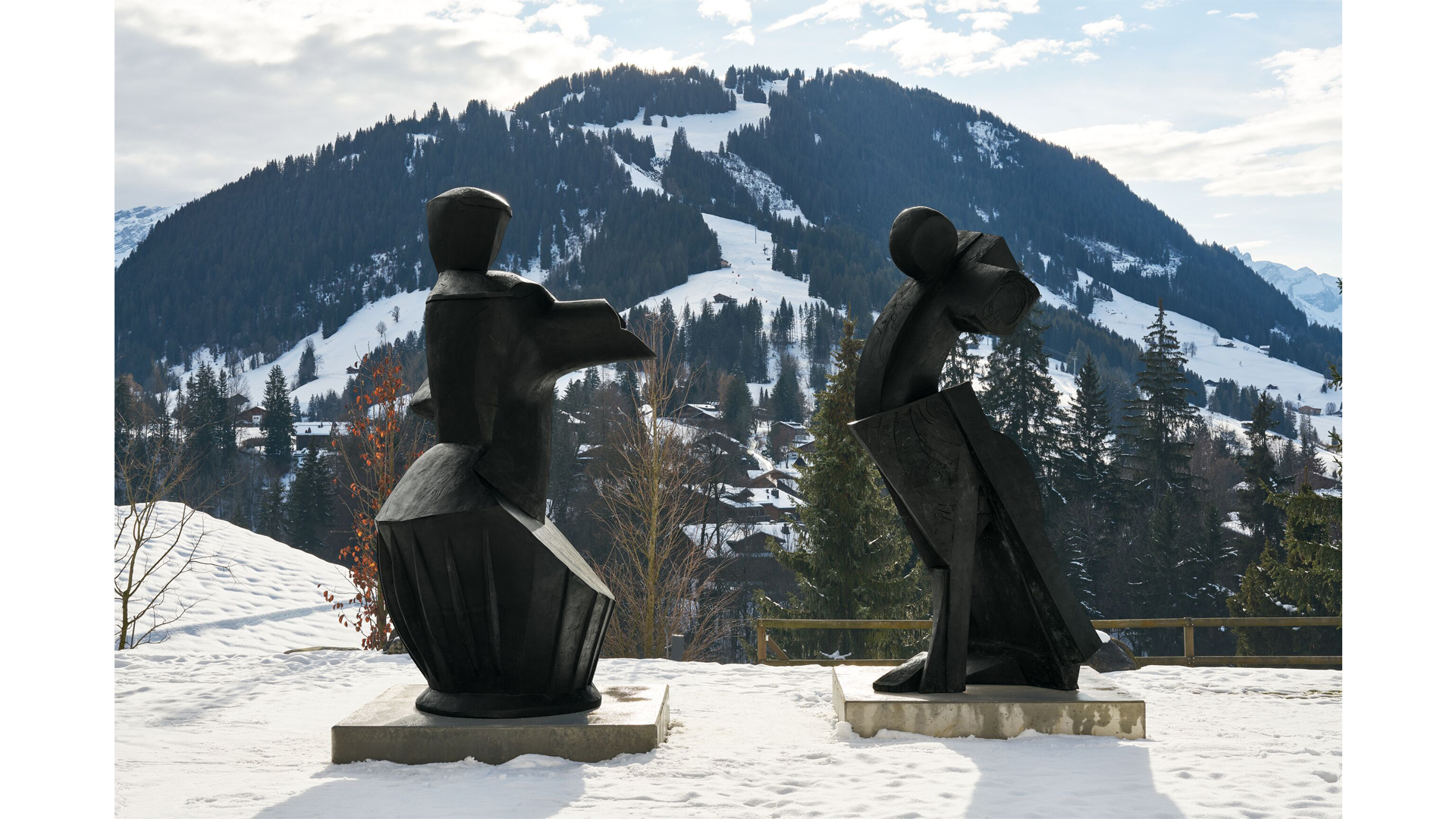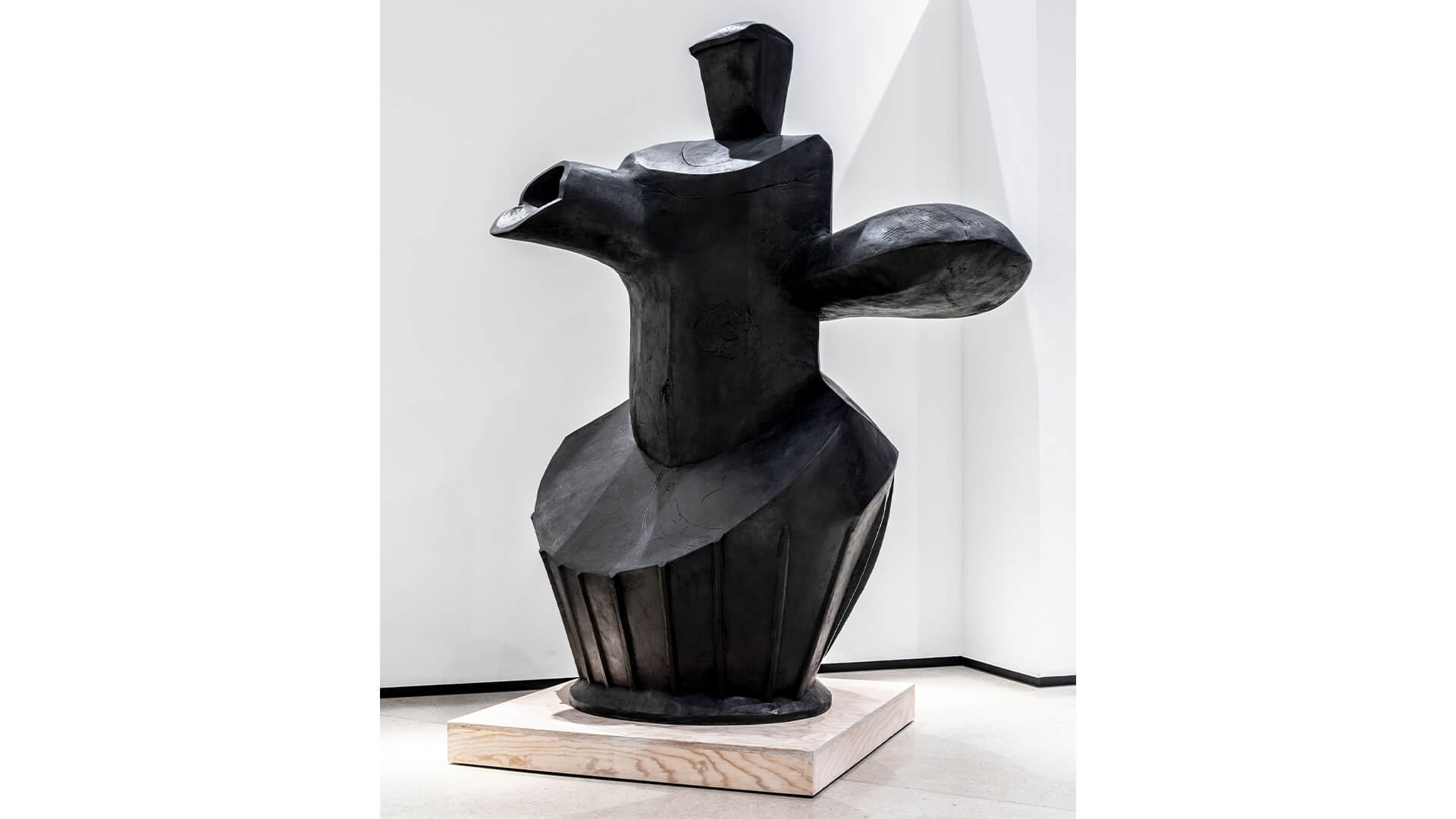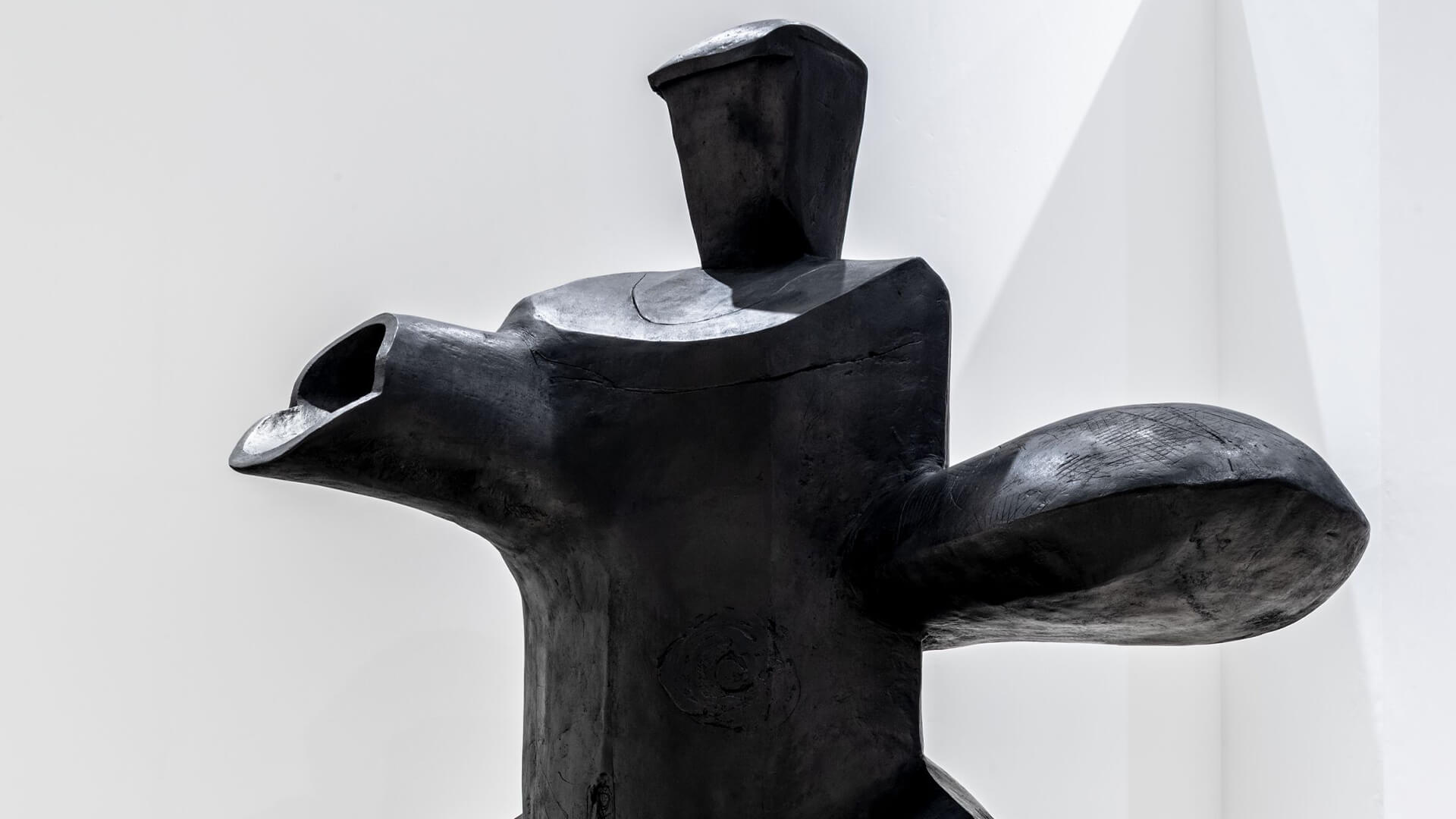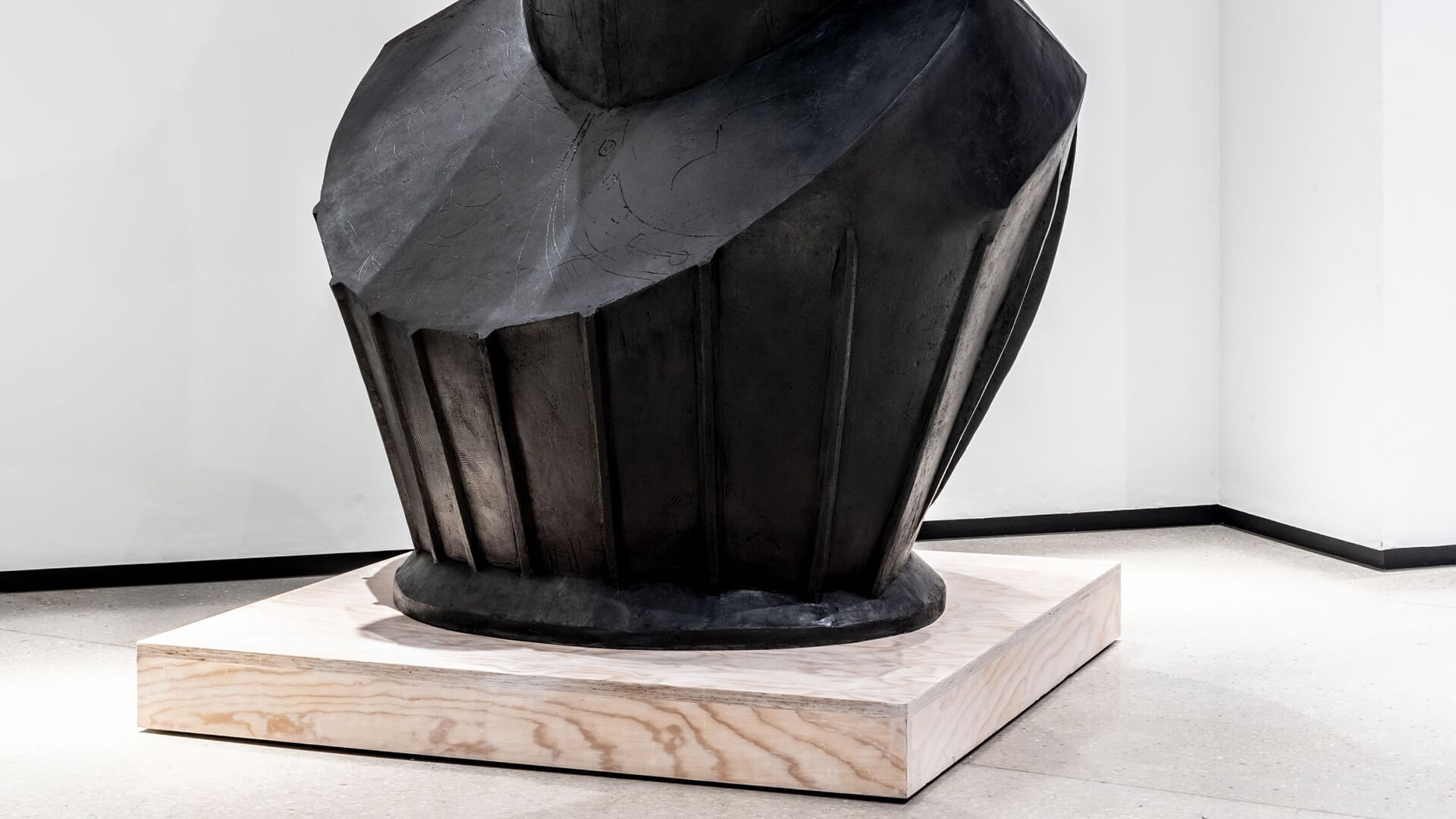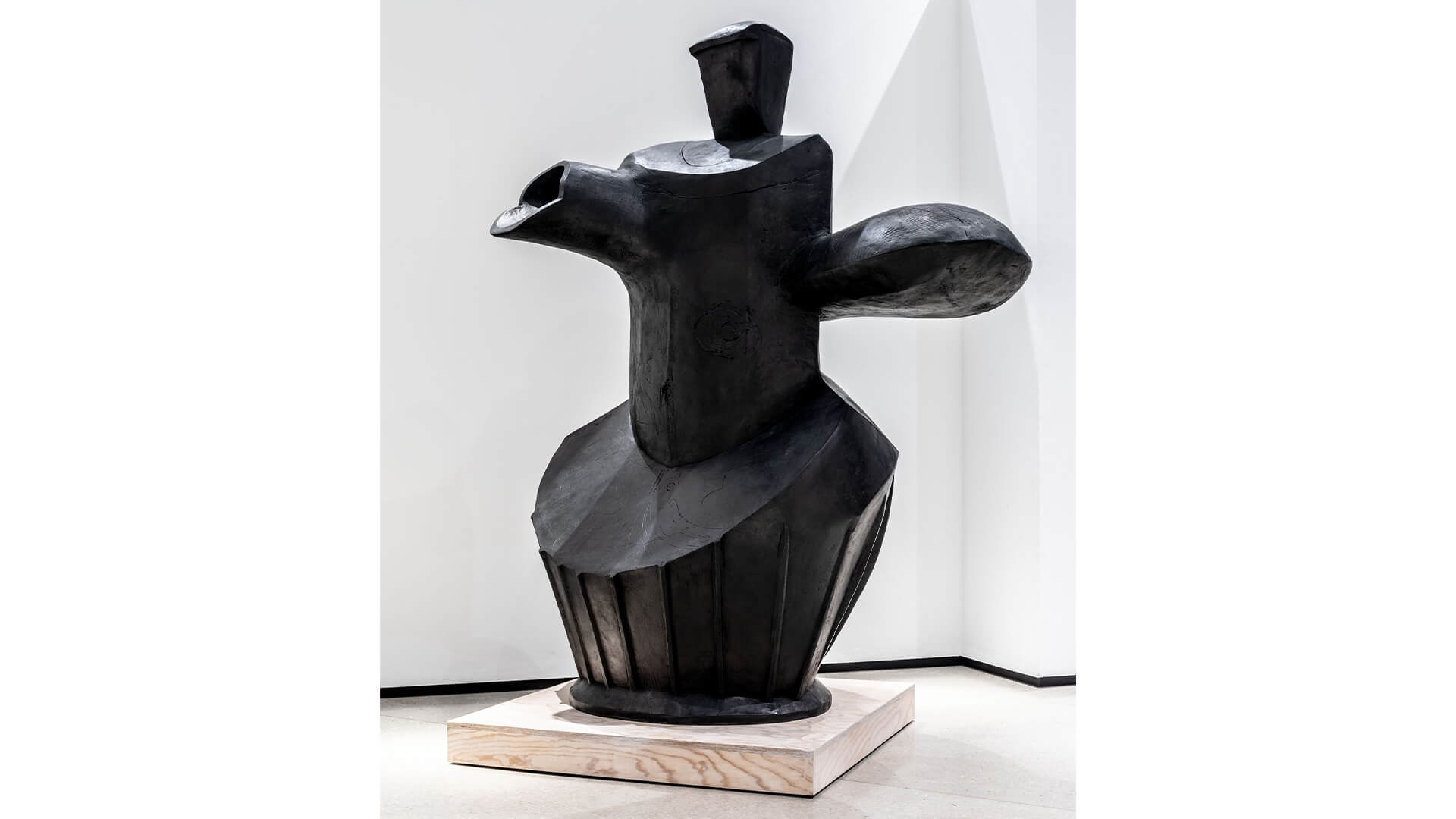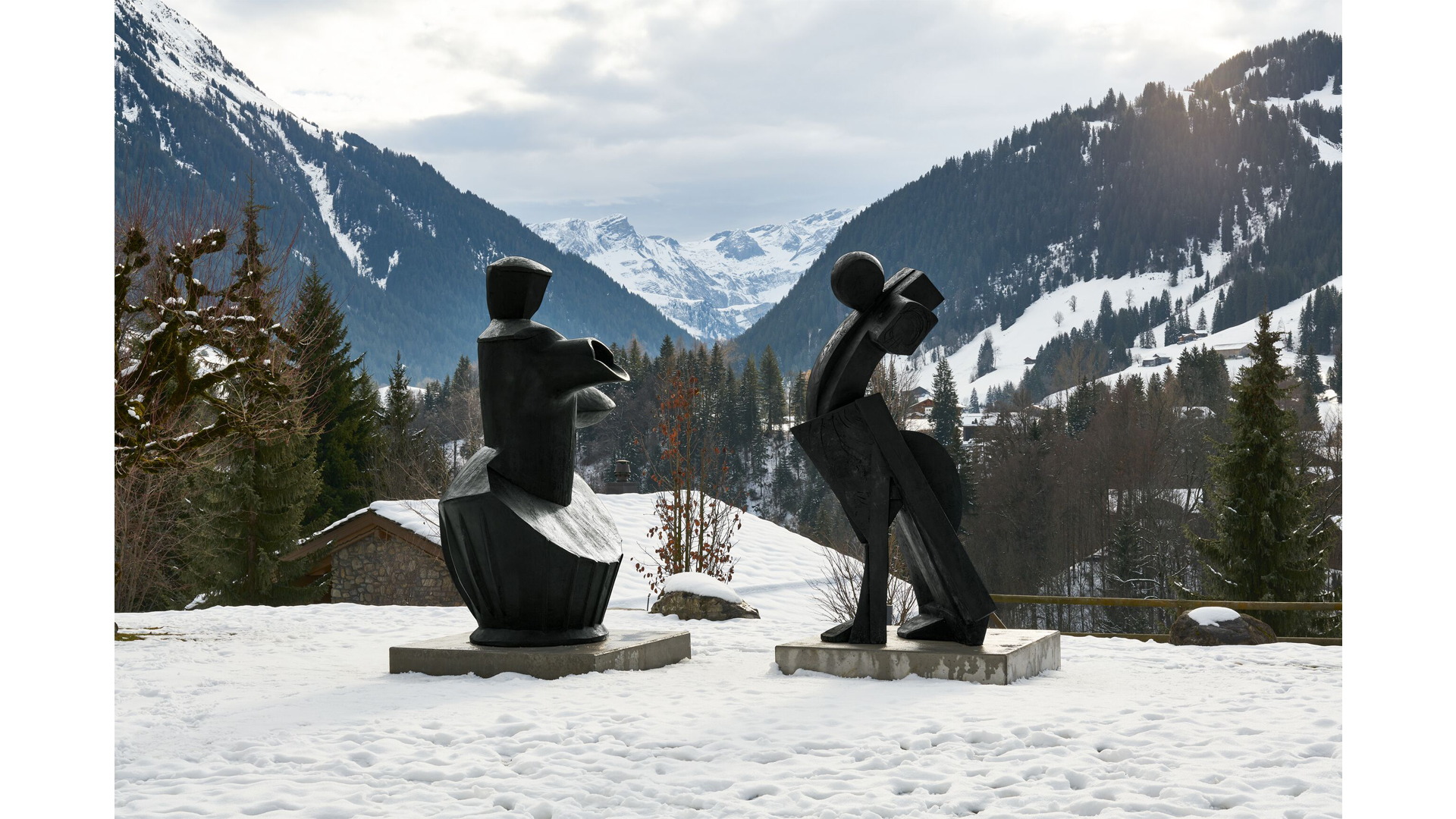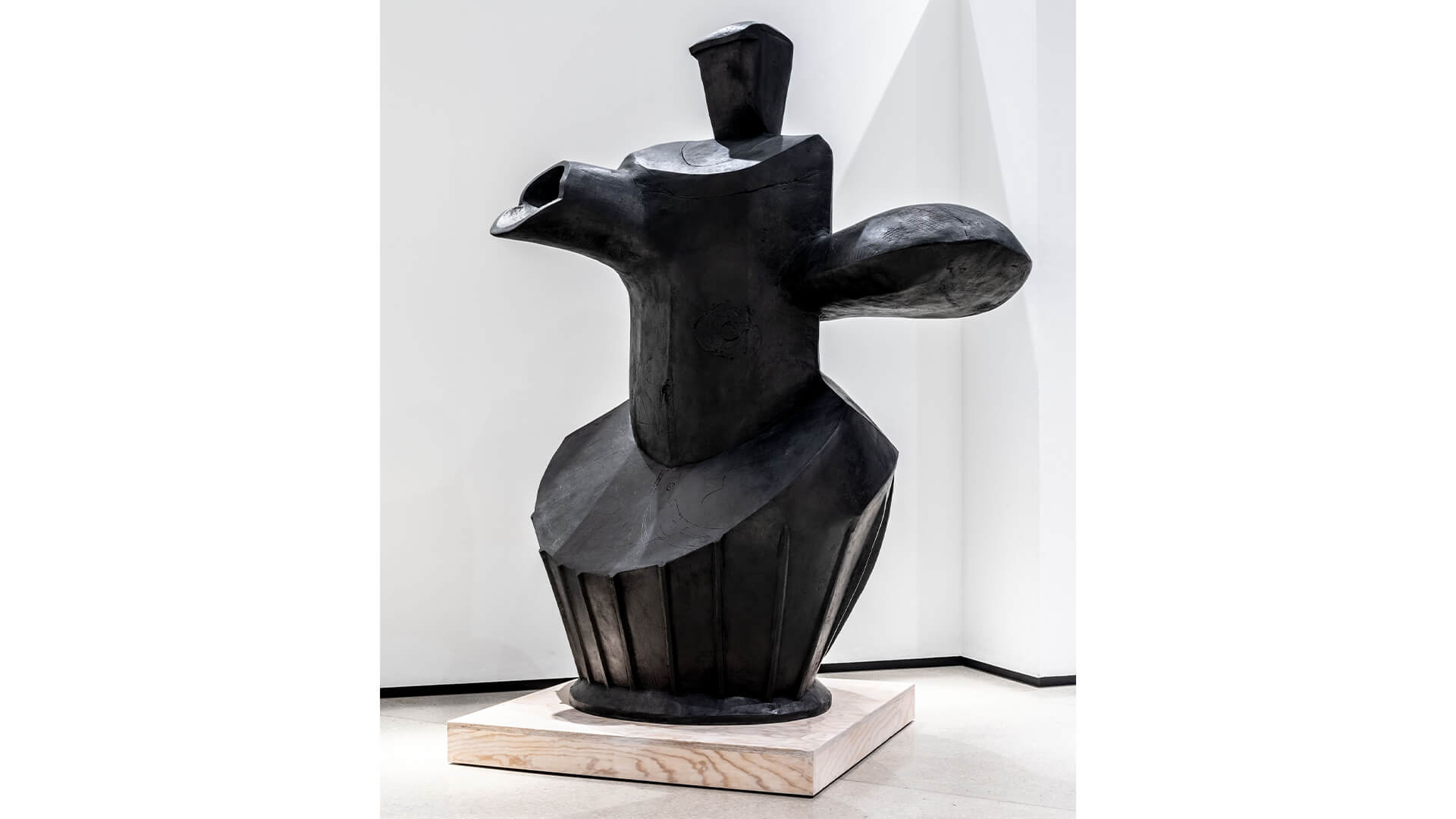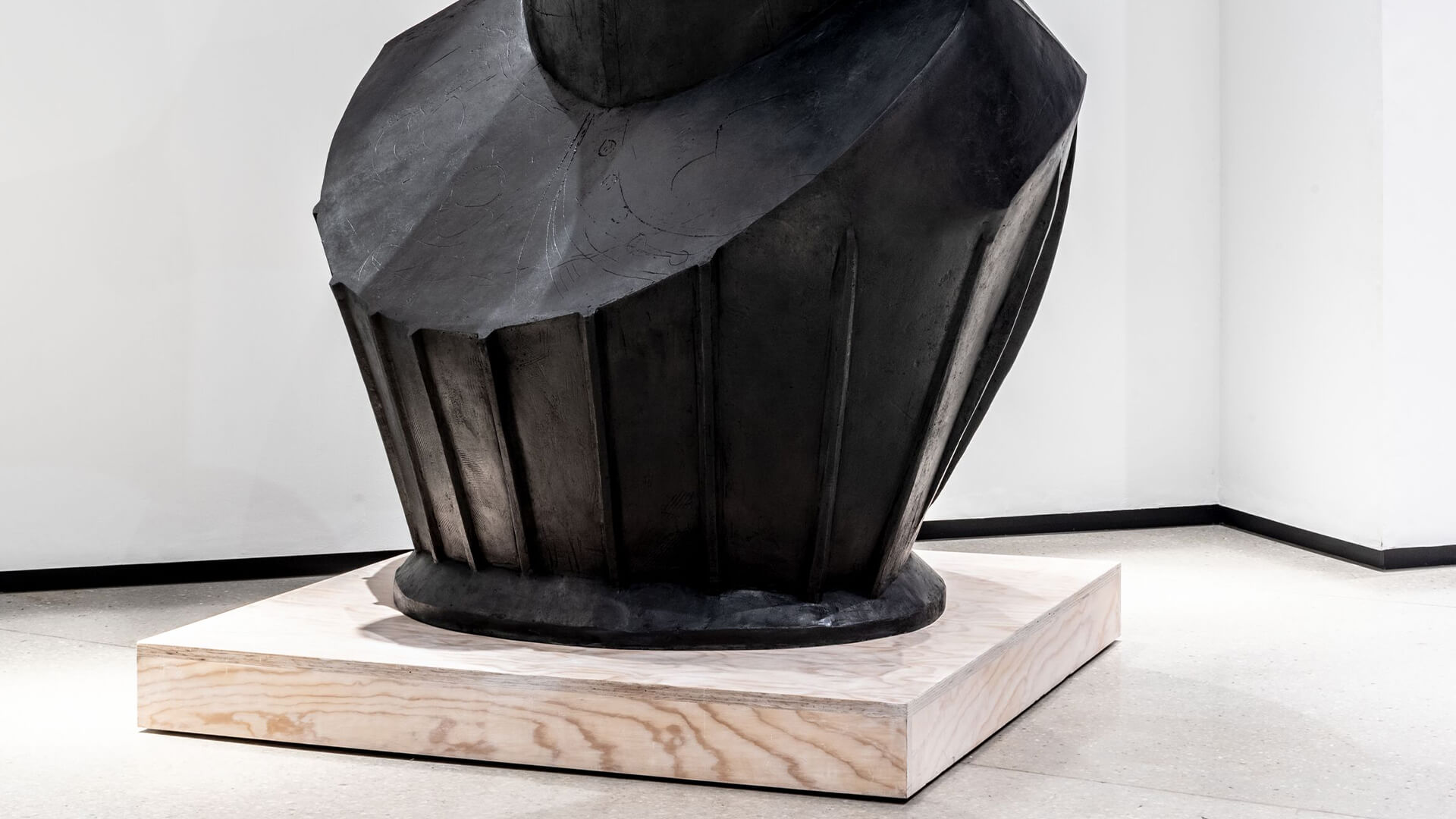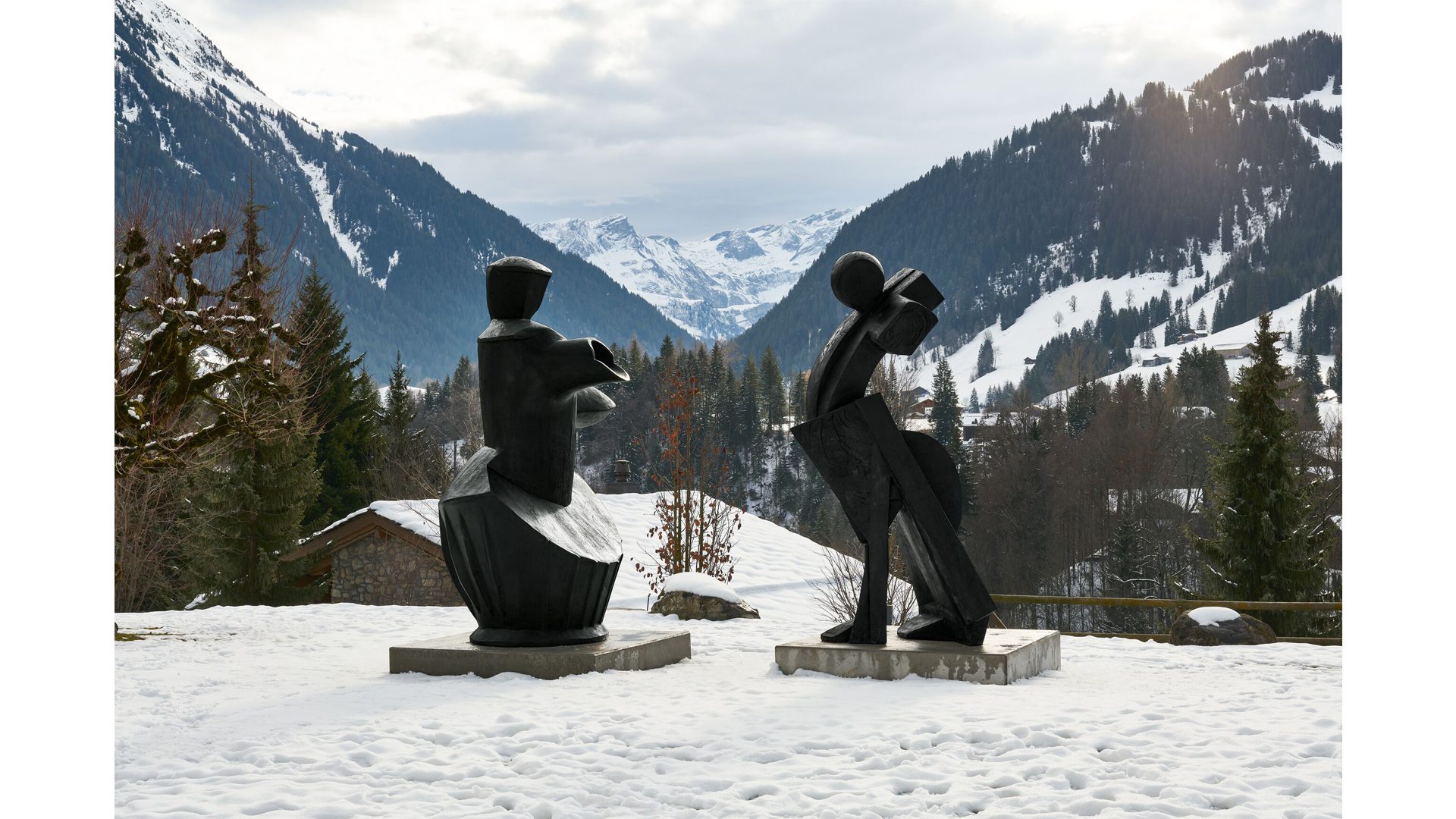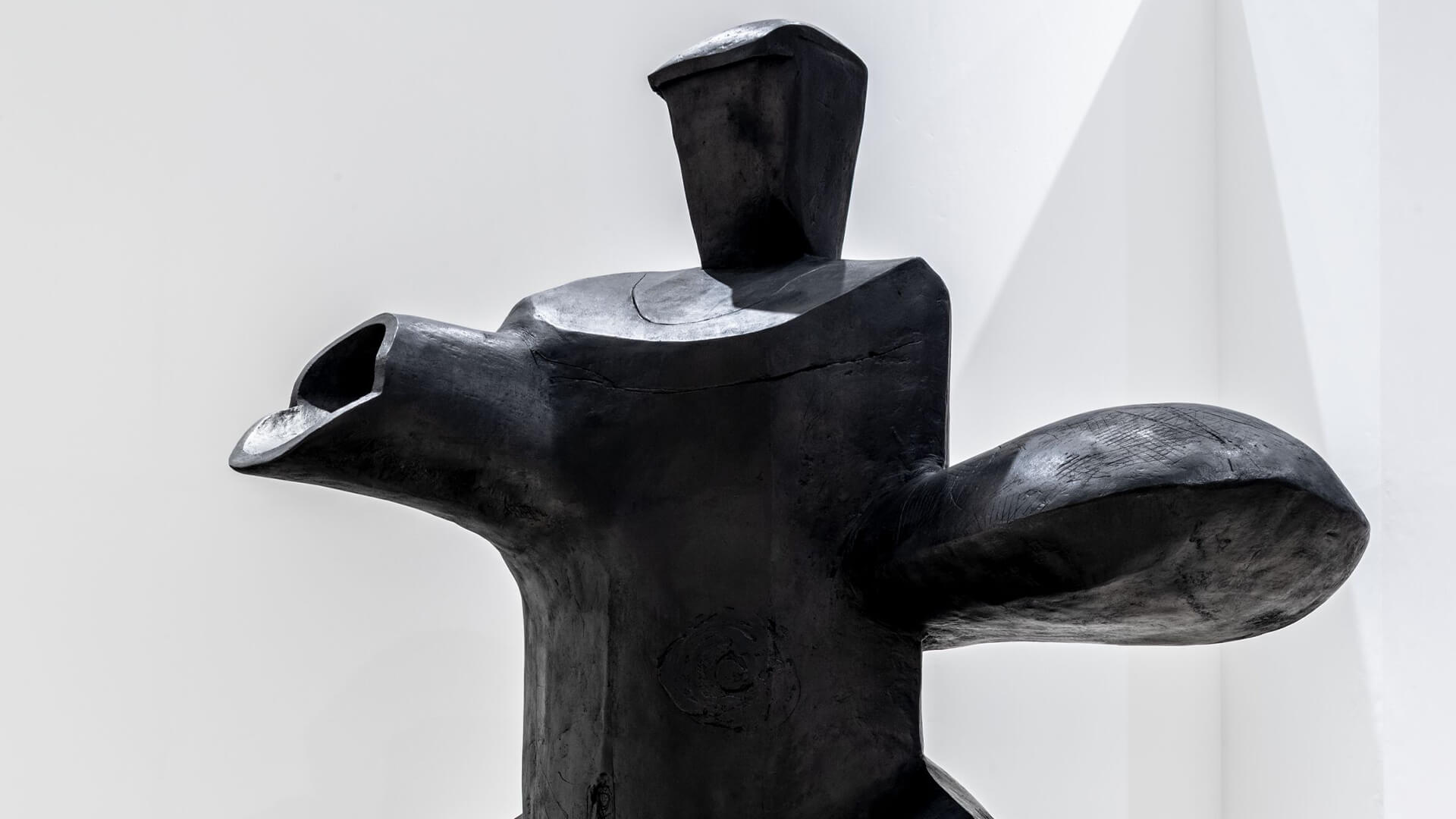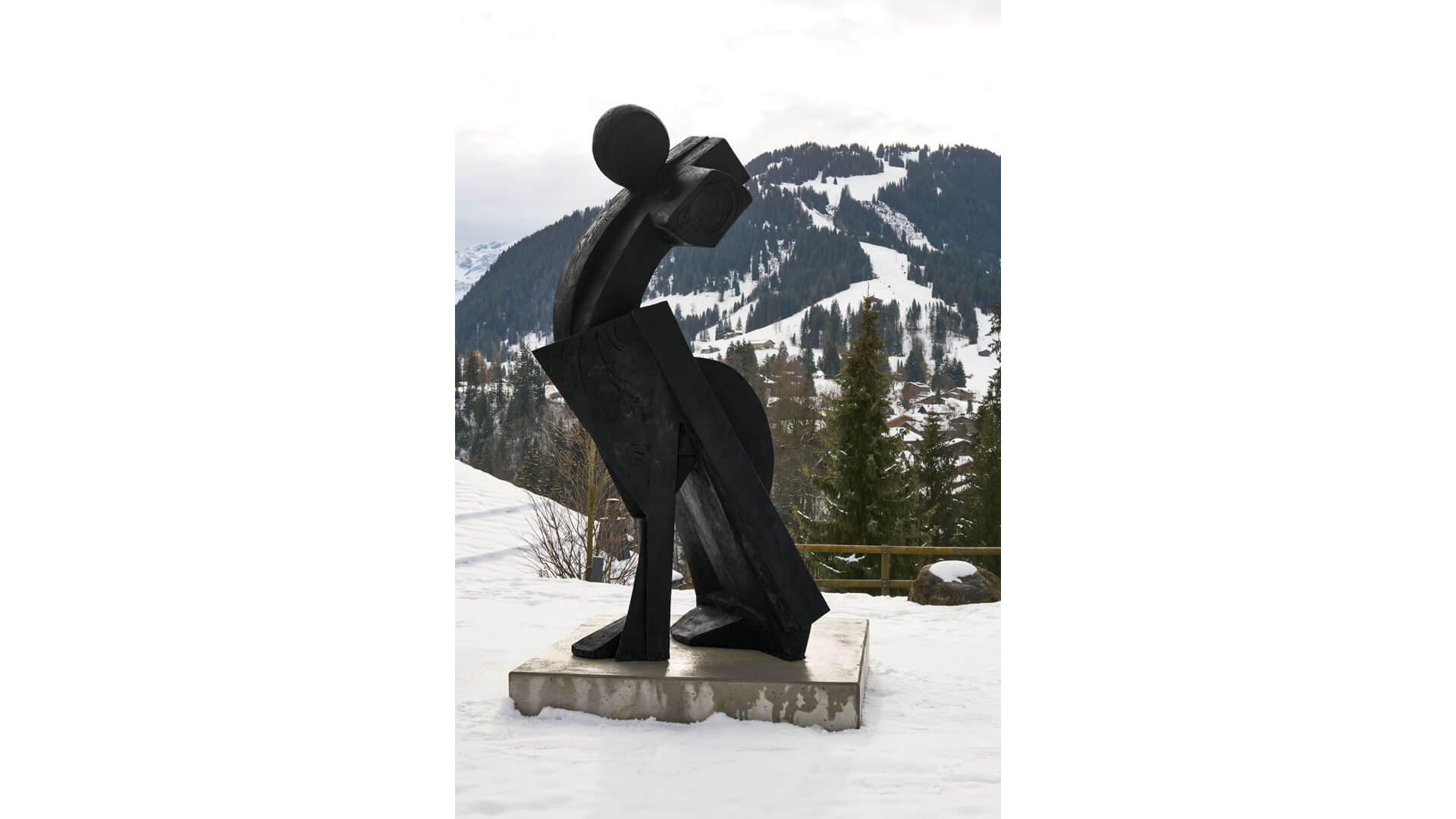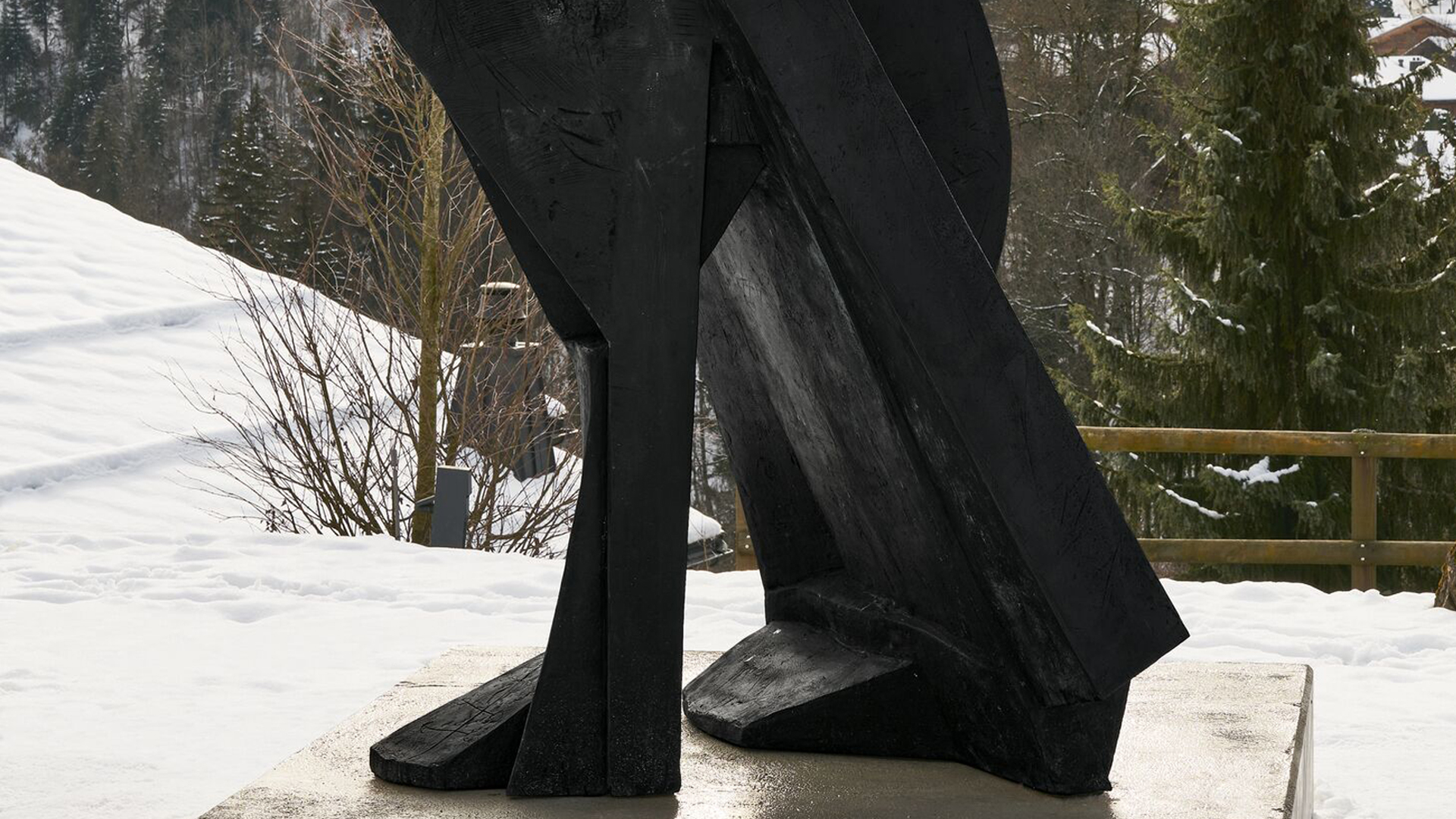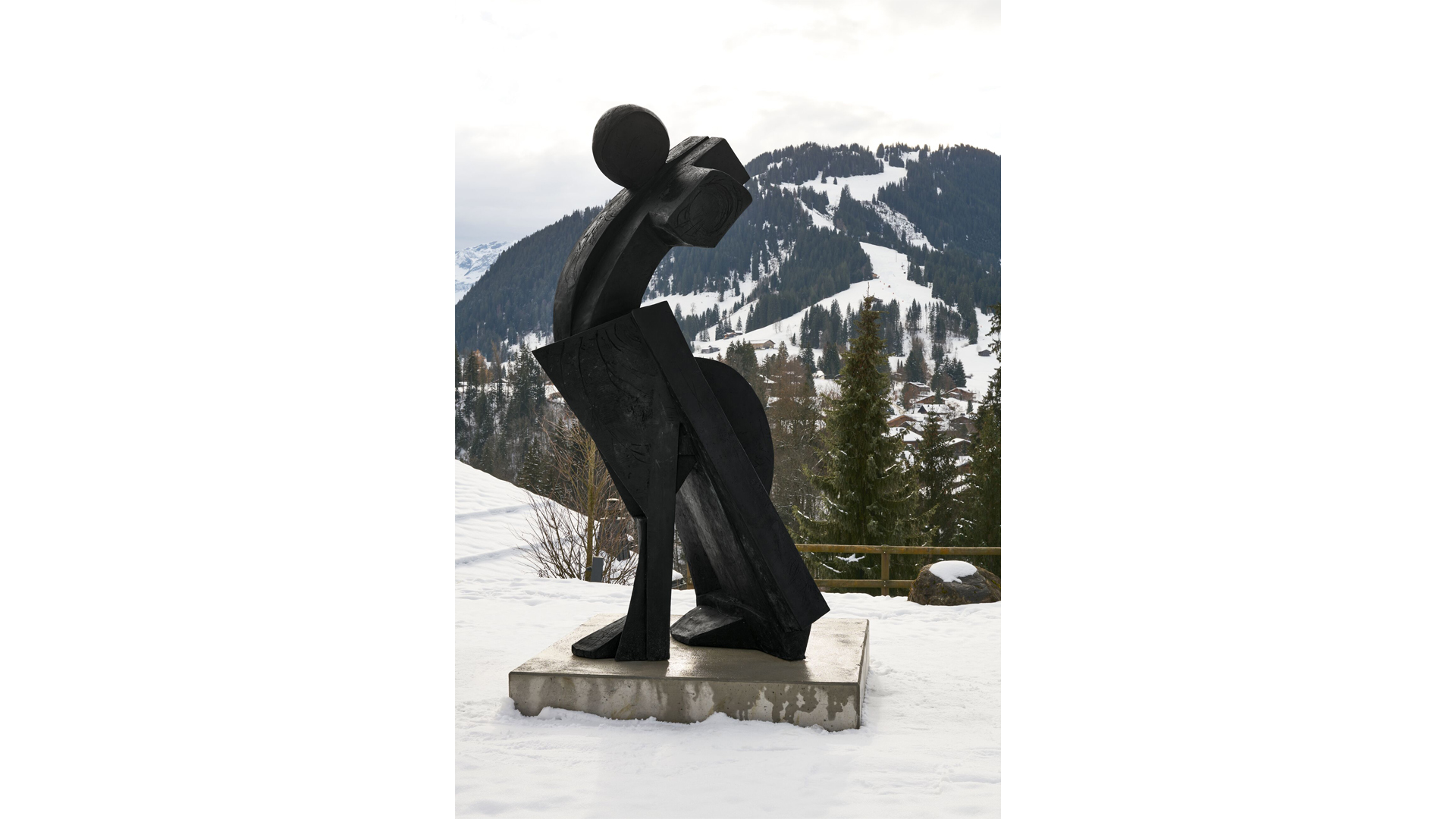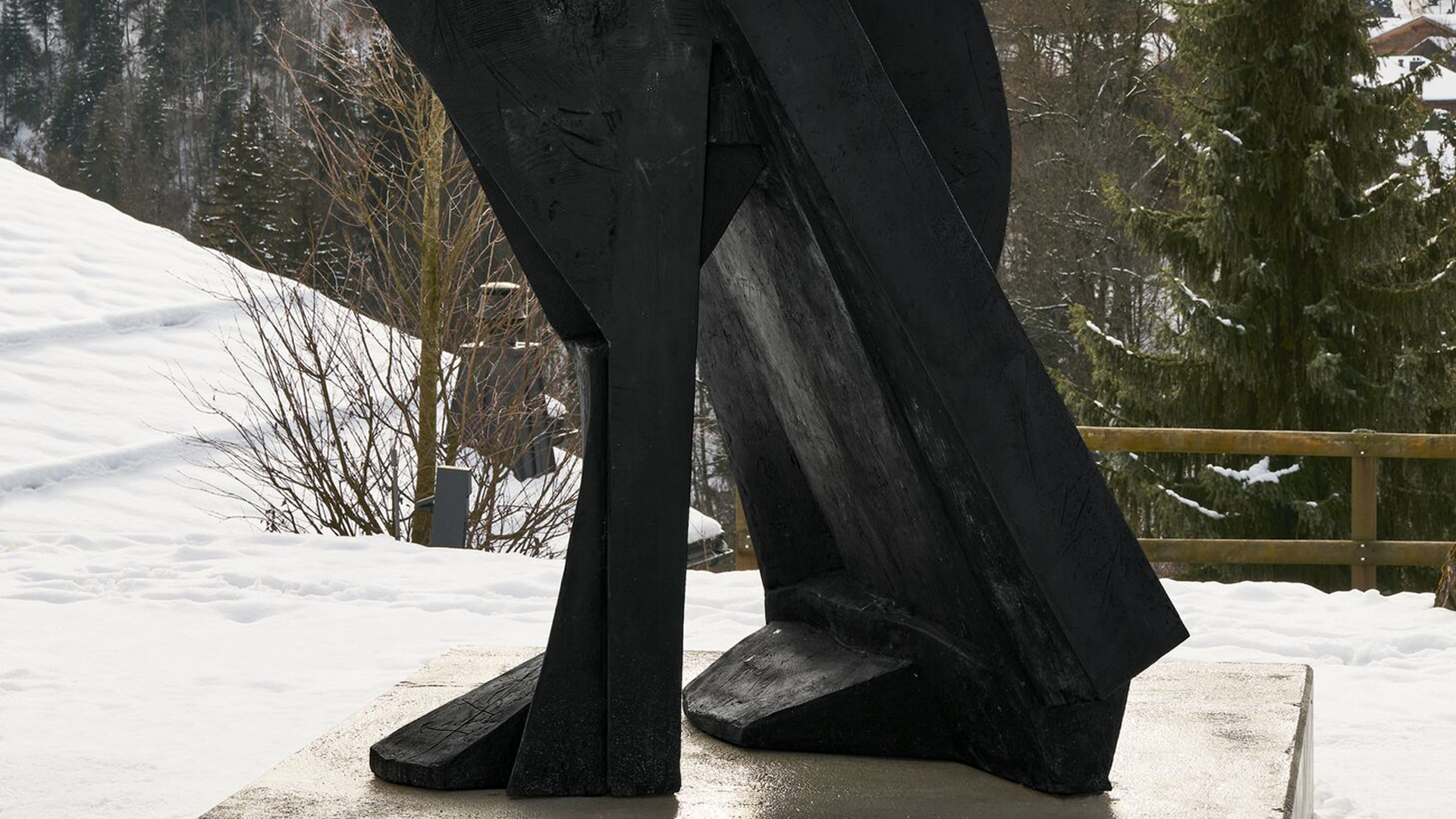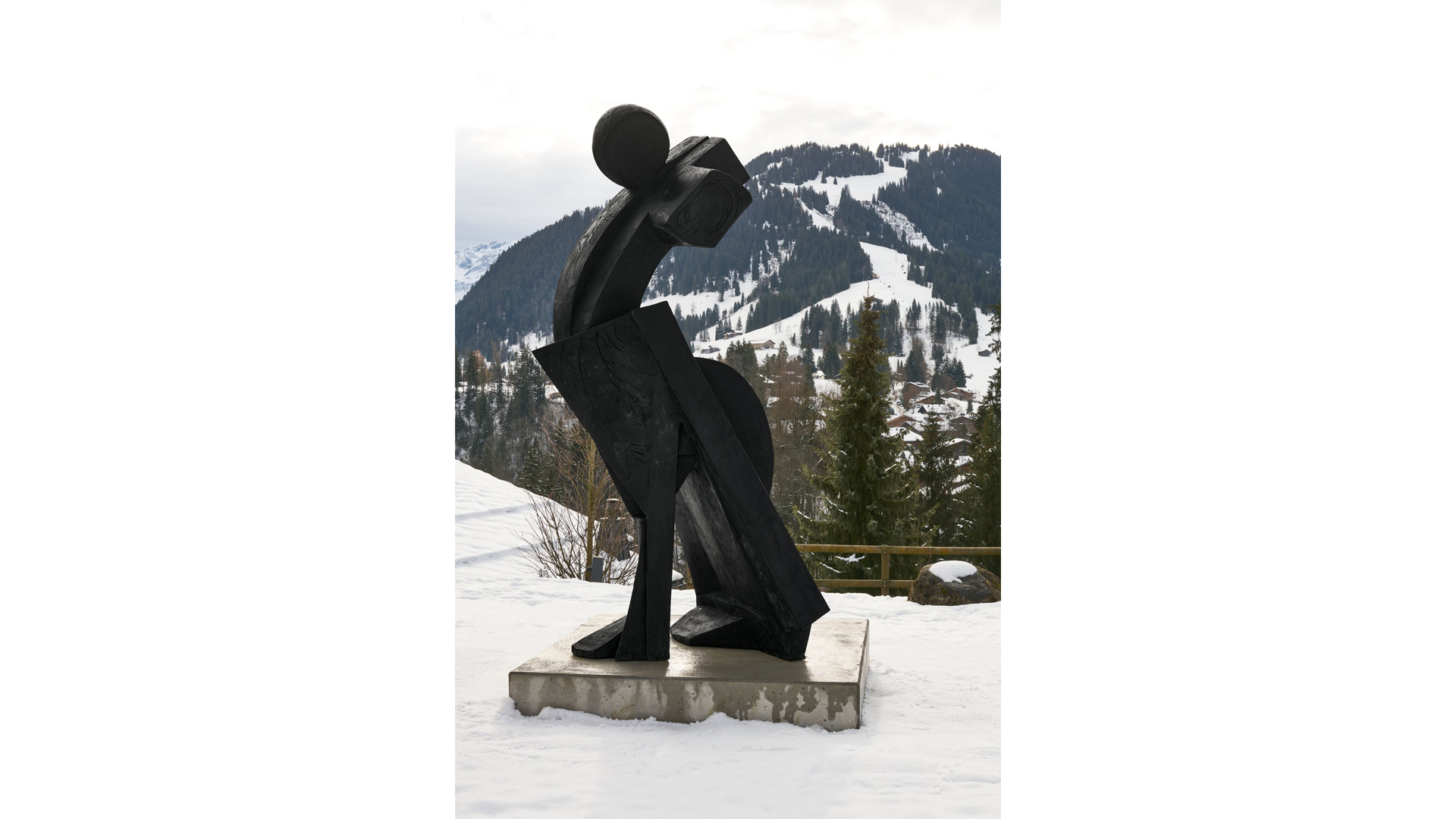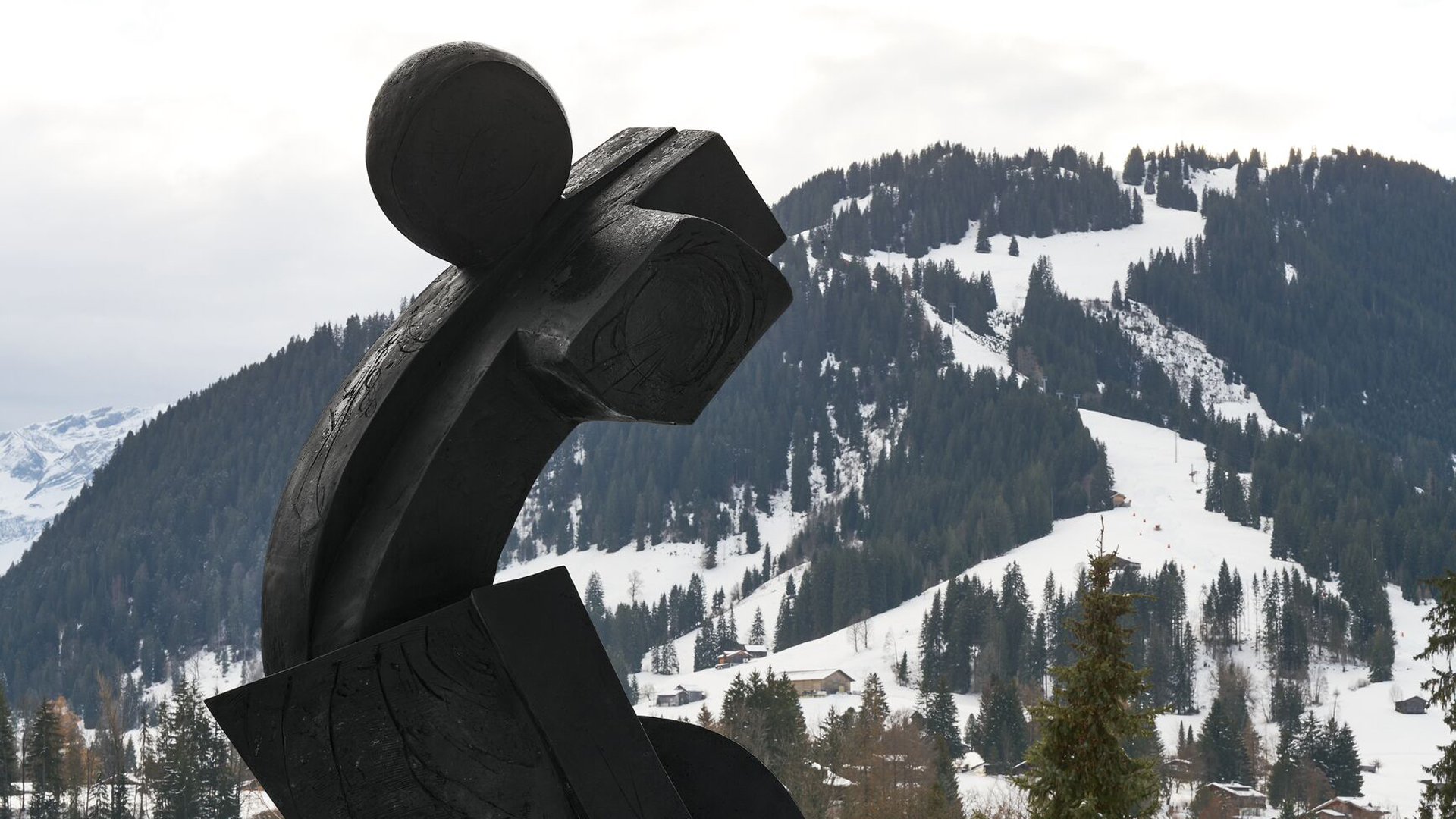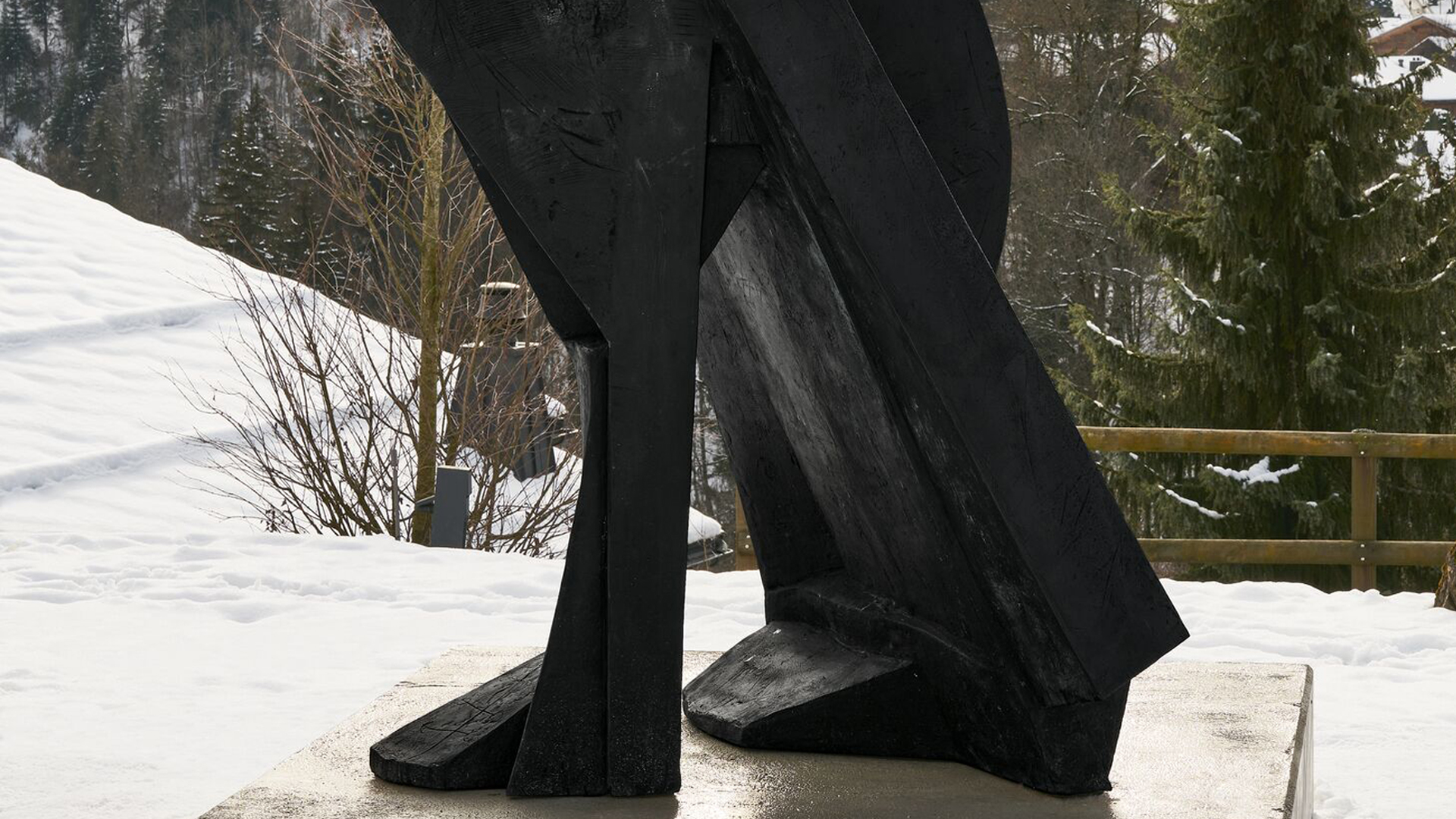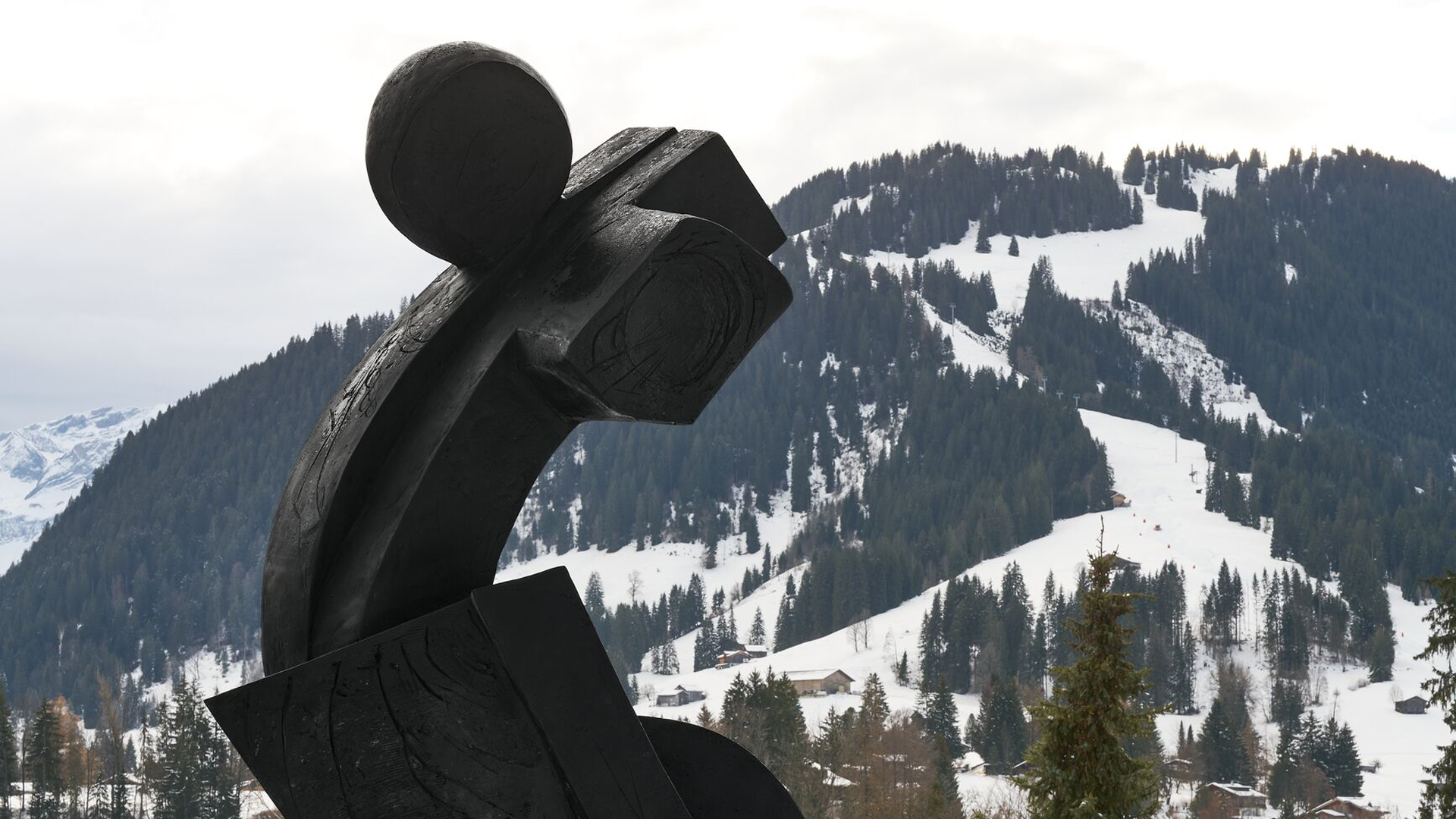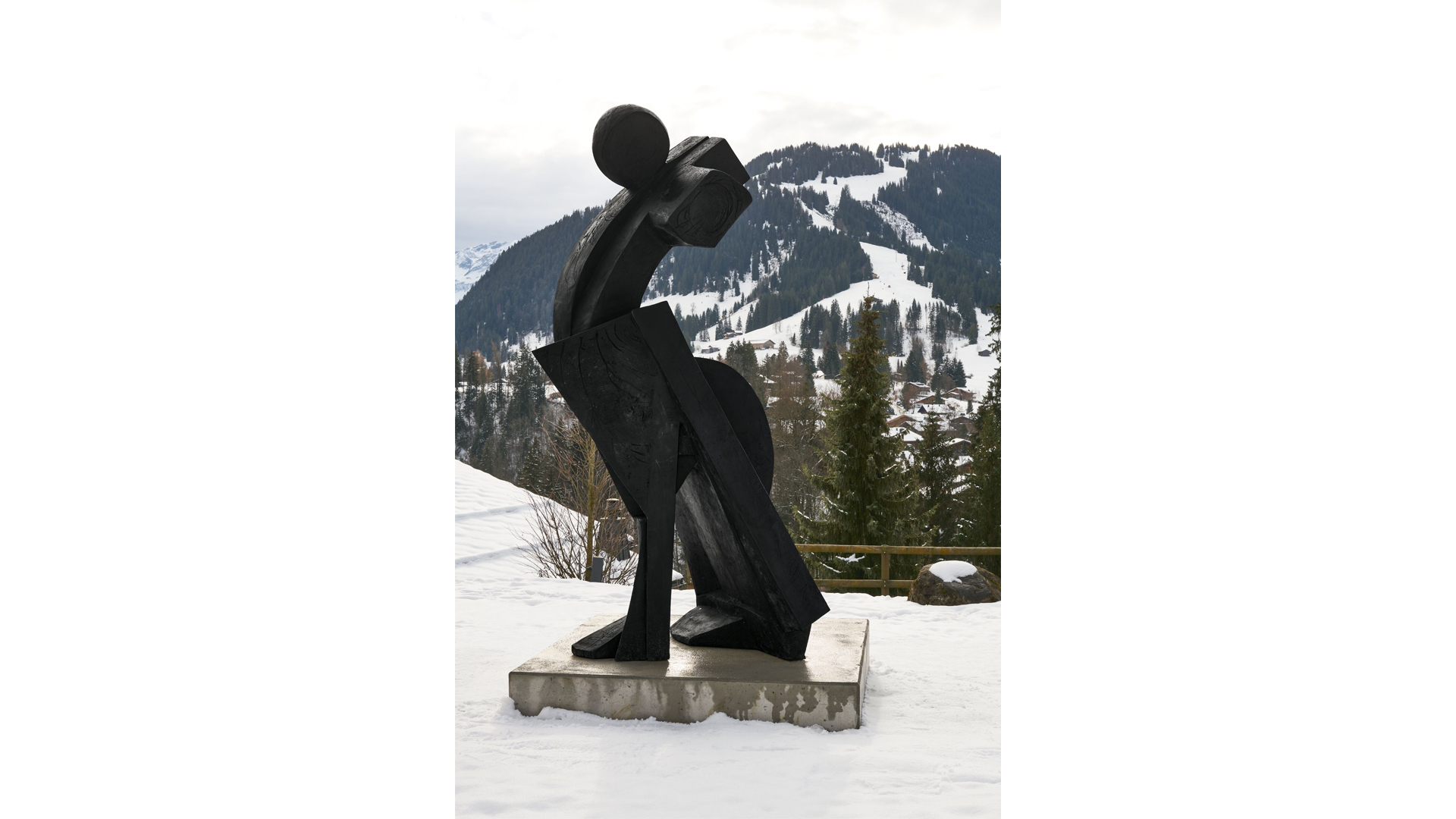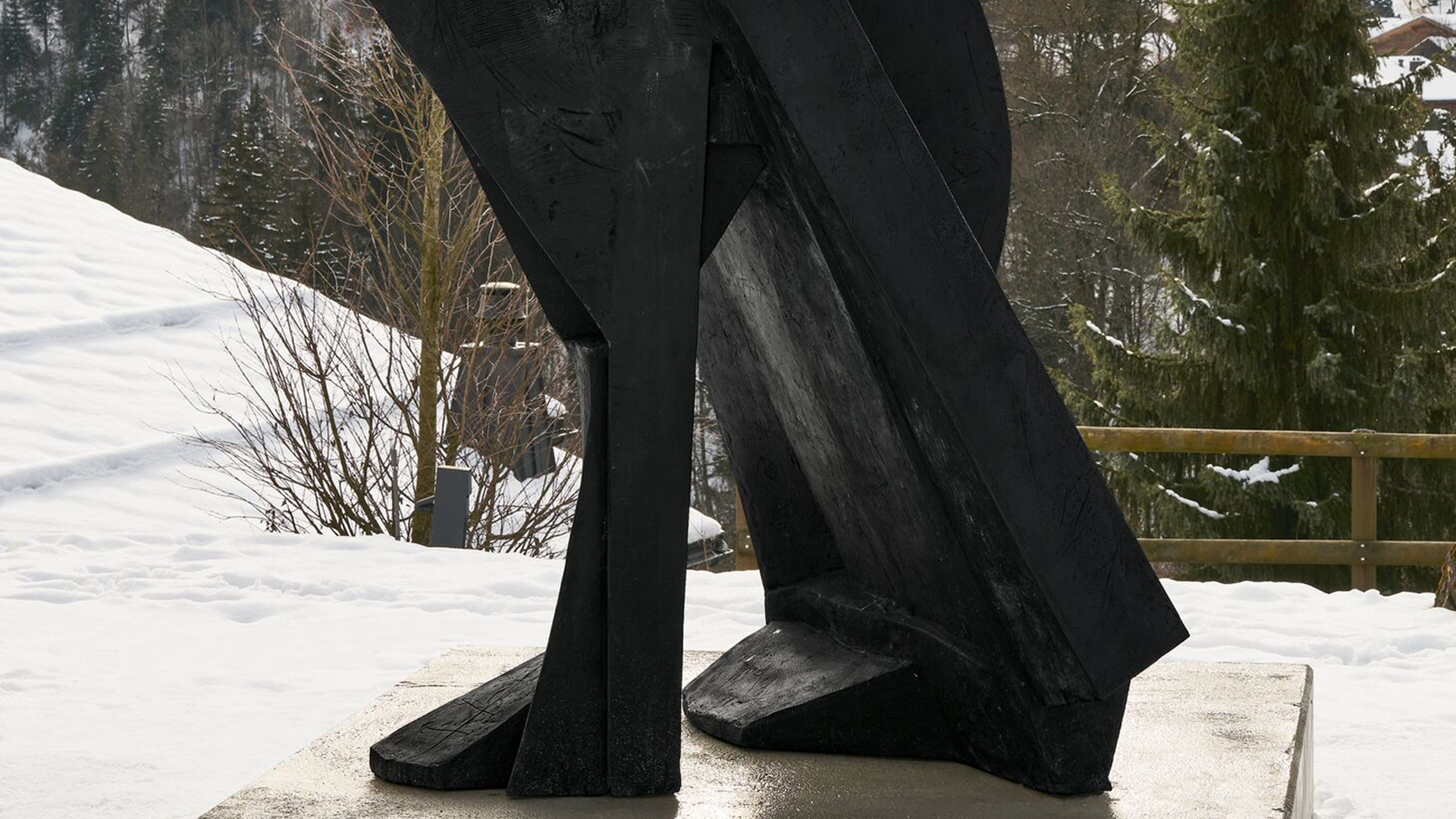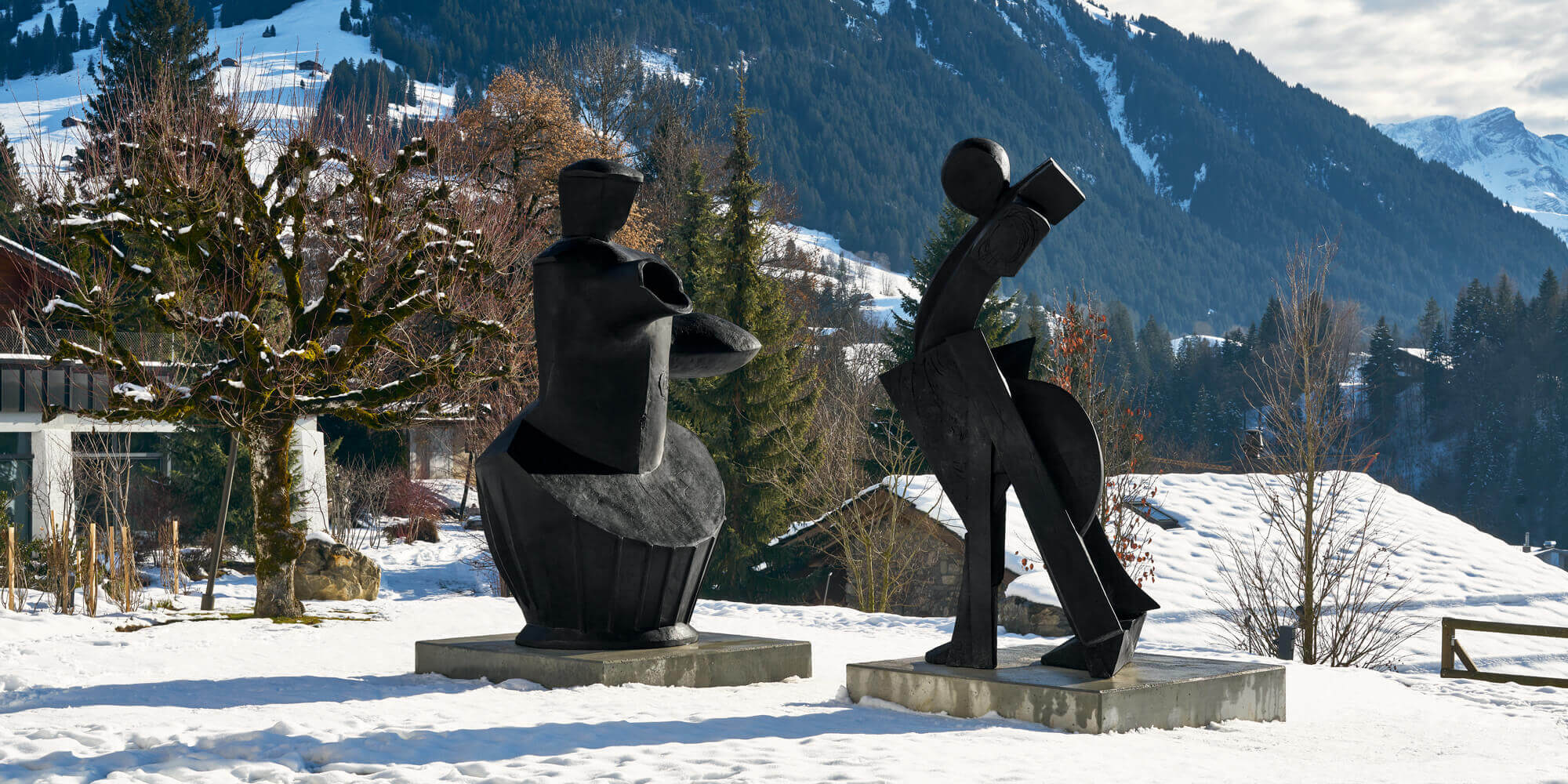
William Kentridge
Cape Silver
Cape Silver
2018 Bronze AP 1/2, Ed. of 2 + 2 AP 360 x 215 x 223 cm / 141 ¾ x 84 ⅝ x 87 ¾ in
Her
2022 Bronze Ed. 1/2 + 1 AP 340 x 150 x 180 cm / 133 ⅞ x 59 x 70 ⅞ in
‘Cape Silver’ (2018) and ‘Her’ (2022) are monumental reinterpretations of William Kentridge’s renowned Glyphs series, which explore the fluidity of symbols and the subjective nature of perception. Given his extraordinarily multi-disciplinary practice and passion for opera and stage design, Kentridge relished the opportunity to rework both ‘Cape Silver’ and ‘Her’ in colossal dimensions to further investigate scaling as an instrument to create and alter meaning. The remarkable bronzes boldly interact with each other and their Alpine setting, occupying and defining the space around them.
‘With the glyphs I wanted a silhouette with the weight that the shape suggested. A shape not just balancing in space, but filling space.’—William Kentridge [1]
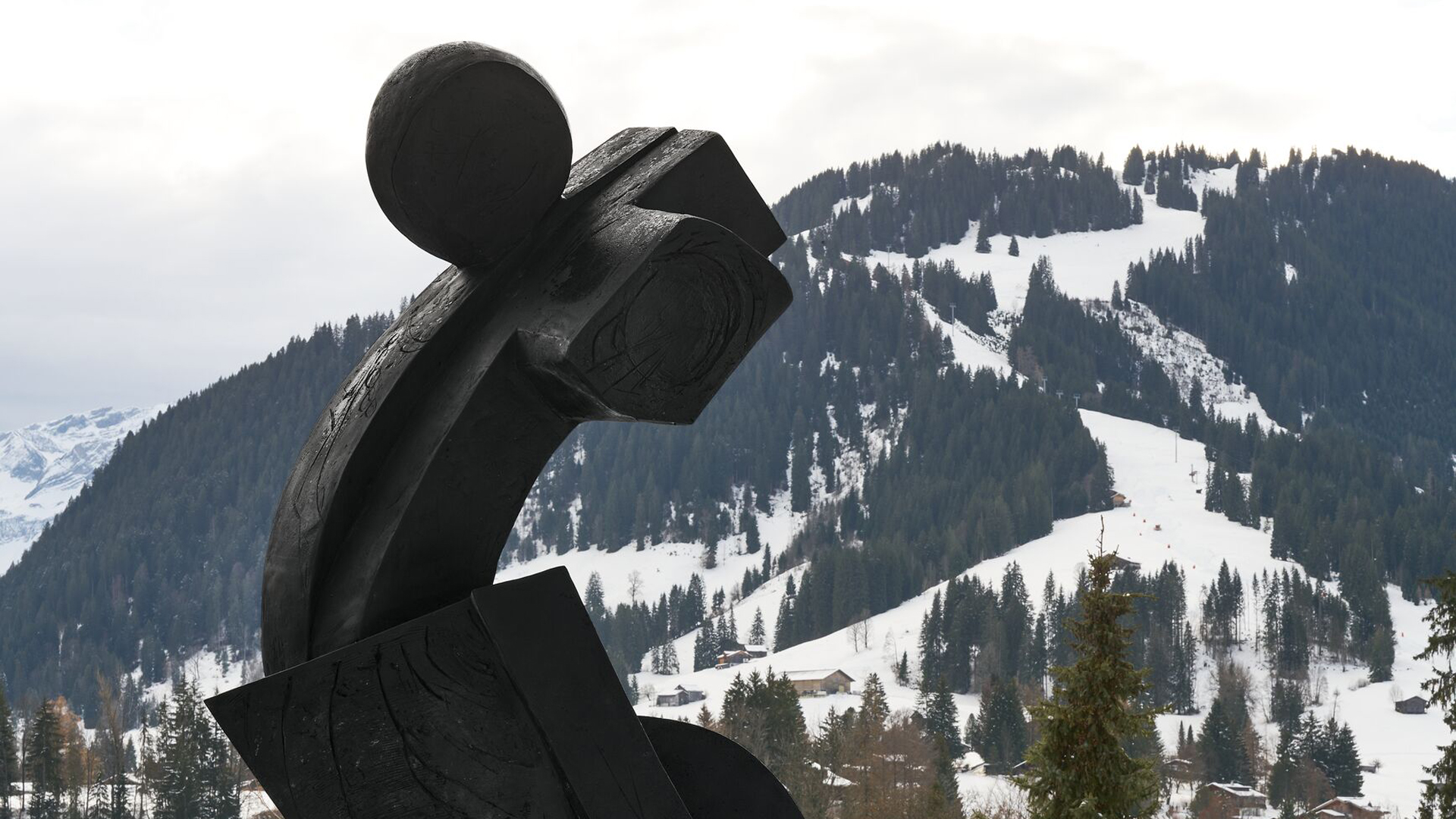
Kentridge’s Glyphs were inspired by written languages, such as Chinese, in which a visual symbol represents both a sound as well as a single word or phrase—such logographic writing systems, in which characters can be rearranged to shift the meaning of a sentence, have been influential to Kentridge’s practice. [2] Kentridge has explored these ideas through three sets of Glyph sculptures, starting with ‘Lexicon’ in 2017, followed by ‘Paragraph II’ in 2018, and ‘Cursive’ in 2020. An initial version of ‘Cape Silver’ first appeared in ‘Lexicon’, and that of ‘Her’ in ‘Cursive.’
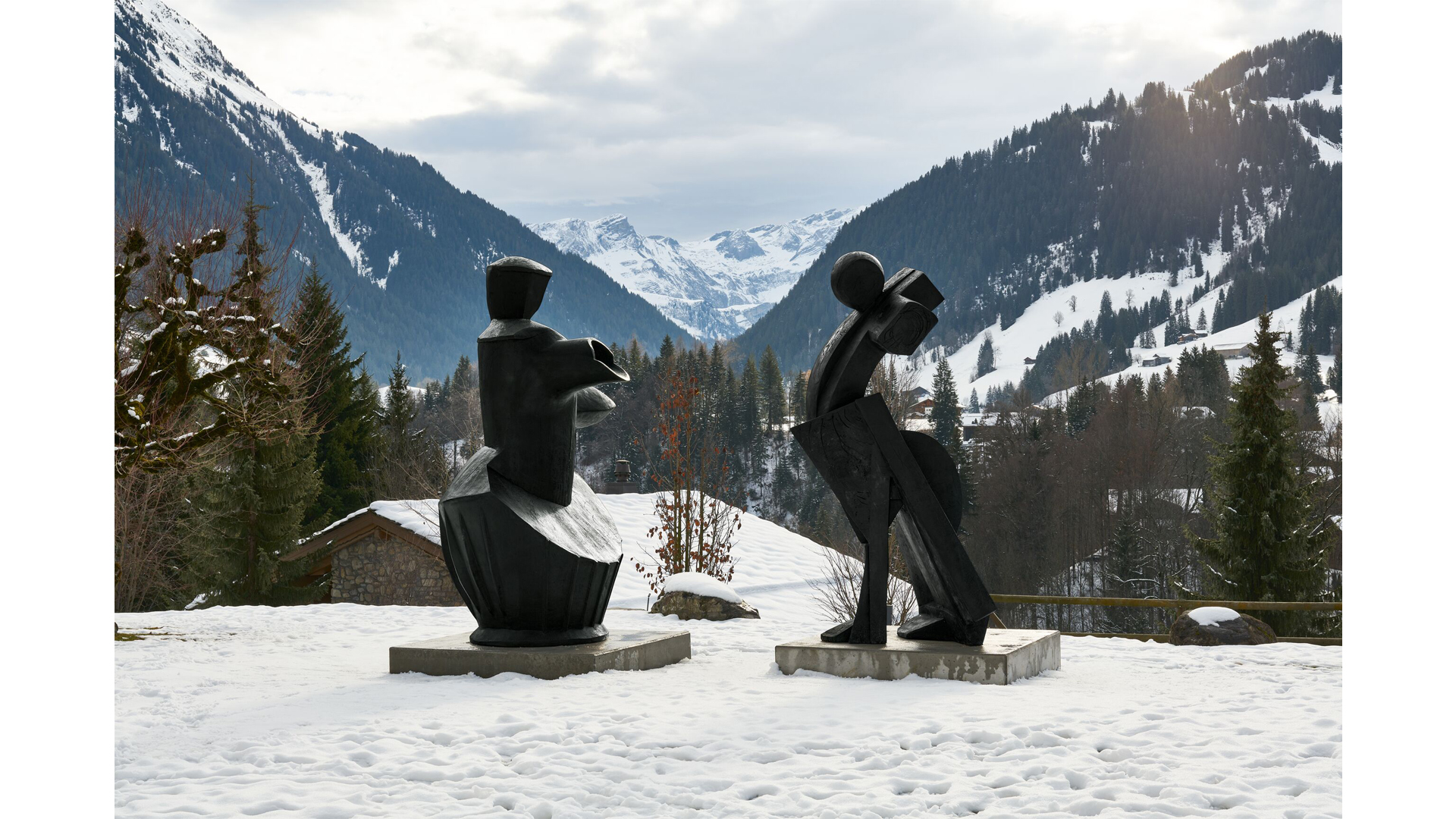
The extraordinary bronzes that make up the Glyphs stem from ‘Kentridgean signs’ developed through different practices, spanning not only sculpture and drawing, but also opera, theater costumes, photography and animation, as well his deep understanding and appreciation of his artistic predecessors. [3] Yet crucially the meanings of Kentridge’s Glyphs are universal and evolving. Although the bronzes might suggest fixed definitions and ‘a kind of diary’ for the artist, he also emphasizes that their messages are something ‘to be excavated by viewers,’ allowing them to be read in multiple ways. [4]
‘It is not that there had to be a particular meaning, or a particular range of the images, but rather there had to be the possibility of a meaning in the order—the lines of association between the object—so that inevitably they add up to a kind of self-portrait. … As if one definition of ourselves is the mass of associations with which we are filled, all of them waiting to latch onto the world and its object as they come towards us.’—William Kentridge [4]
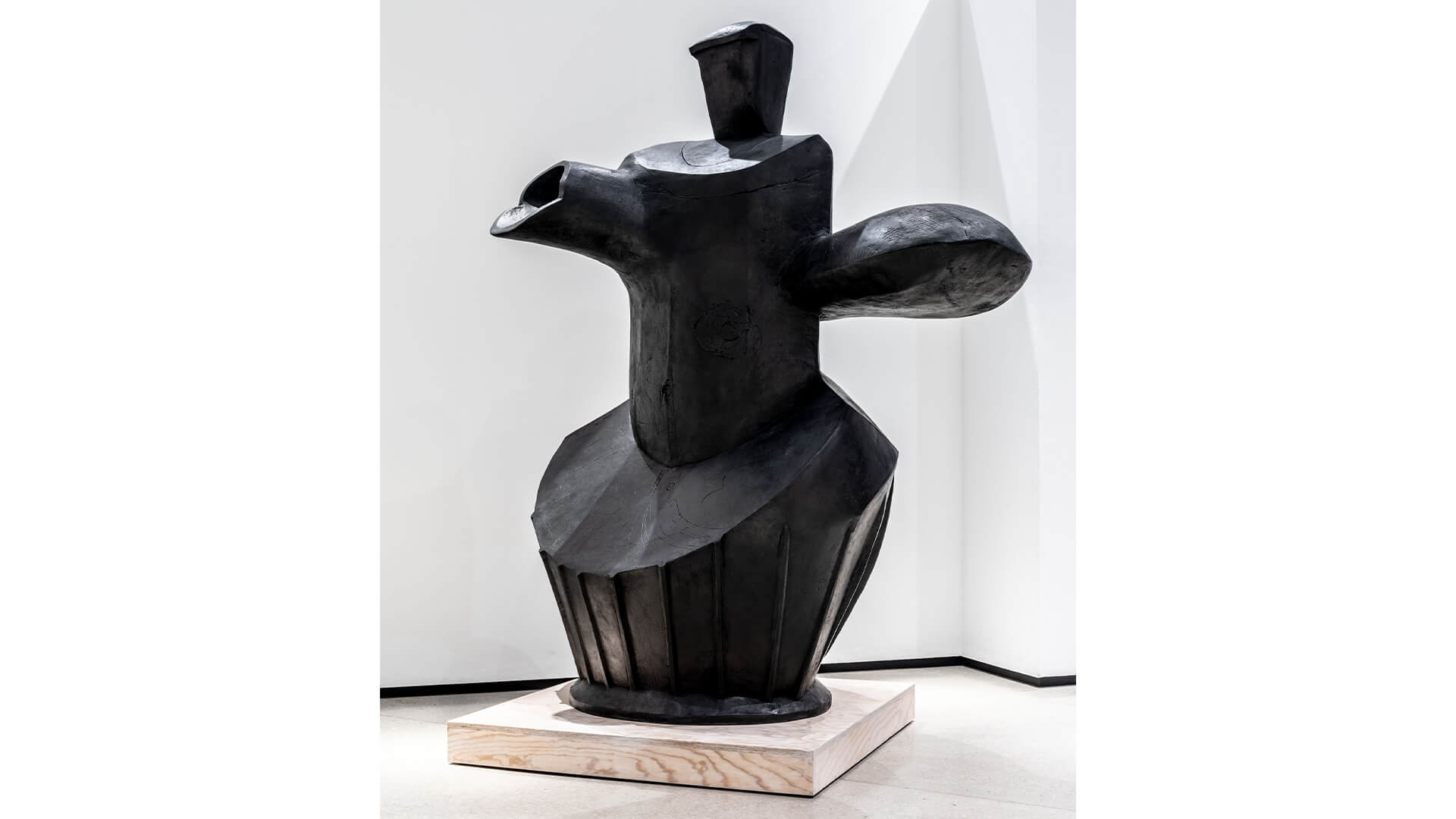
With obvious anthropomorphic qualities, especially when rendered on a monumental scale, ‘Cape Silver’ and ‘Her’ are seen in a Surreal conversation in their present setting. The sweeping geometric arc of ‘Her,’ with industrial references and its overlapping planes, stands in counterpoint to the weighty presence of ‘Cape Silver.’ The coffee pot which defines the form of ‘Cape Silver’ has long been an important motif in Kentridge’s films, assuming various meanings throughout the years. Here, the sensitively-formed lips of the spout are turned towards ‘Her.’ Kentridge has stated, ‘the larger size figures stop being letters and words but become more humanoid.’ [5]
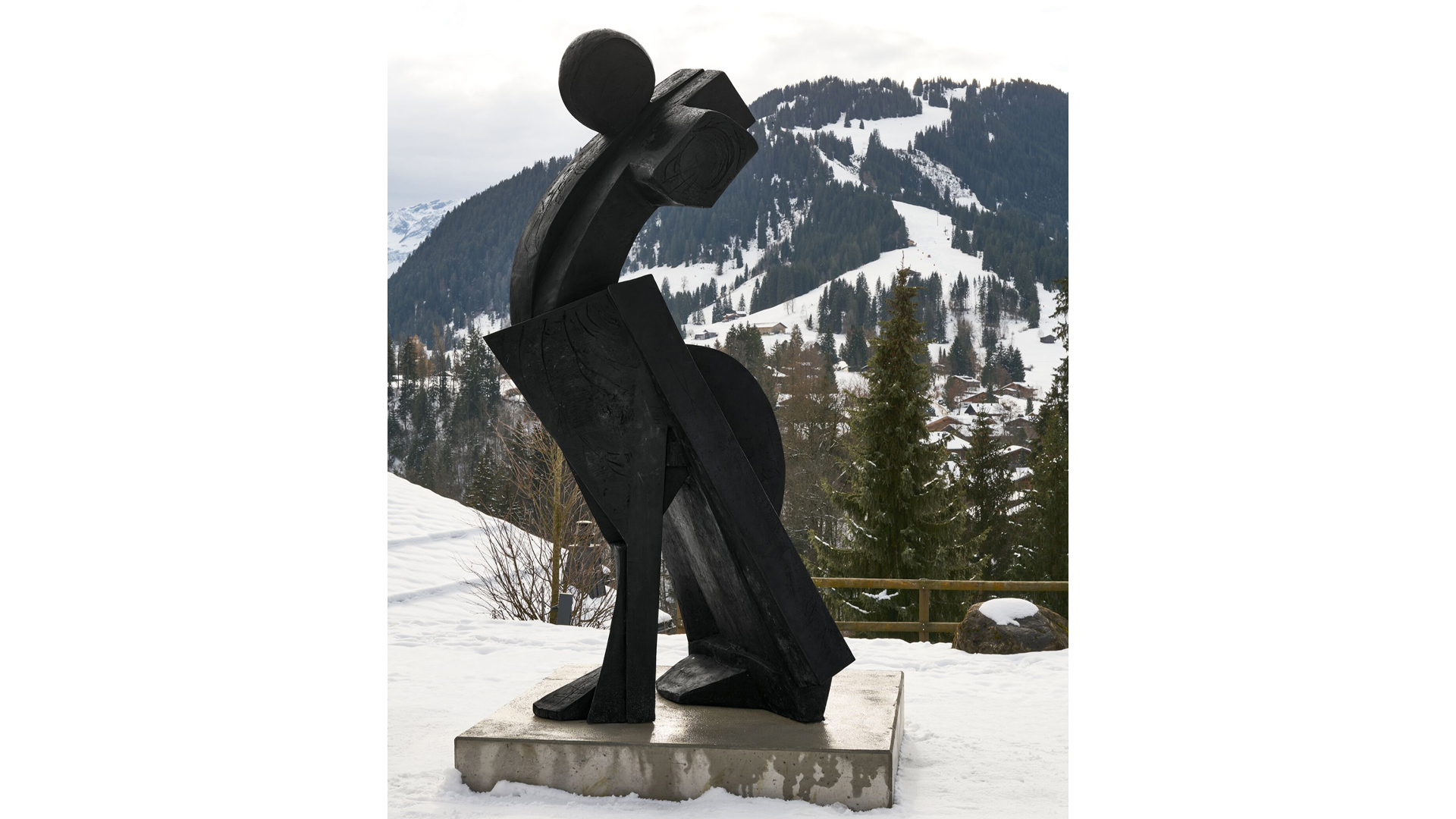
Kentridge’s Glyphs epitomize the artist’s unique visual lexicon, demonstrating his ingenious ability to blur genres while moving between two and three dimensions and across disparate scales. As with most of his work, his Glyphs started as drawings, in this case as a collection of drawings and paper maquettes. The symbolism of Kentridge’s Glyphs is multi-layered—these symbols, both individually and as groups, can be found across the artist’s wider practice, including his drawings, films, sculptures, and even taking form as opera costumes in some cases.
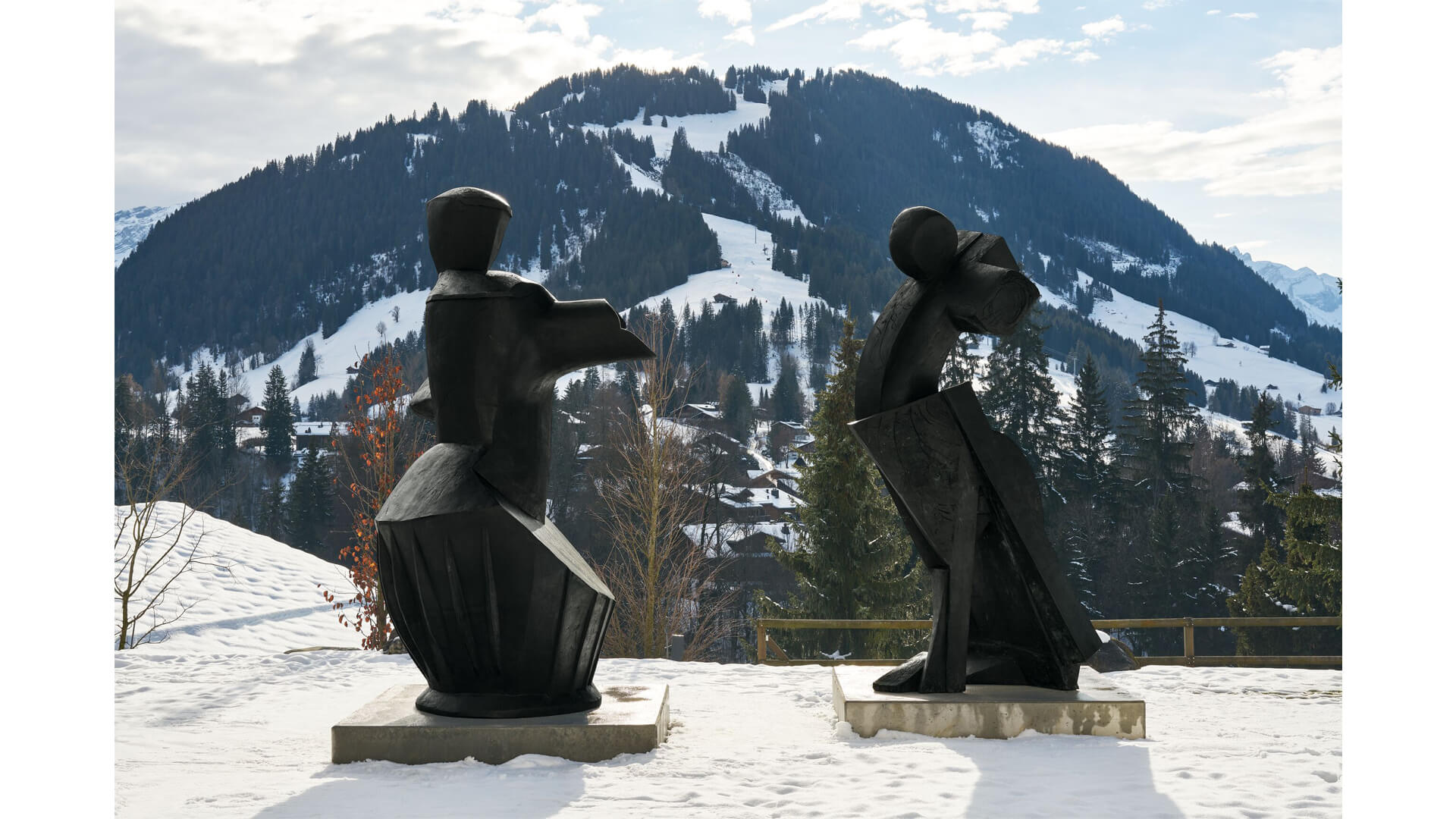
Among the largest sculptures Kentridge has ever made, the duo of ‘Cape Silver’ and ‘Her’ are masterworks that build on the artist’s most intriguing series. They demonstrate Kentridge’s explorative practice of returning to the same visual forms, finding new associations across different media, scale and configurations. Accordingly, Kentridge’s everchanging transformation and evolution of his artistic processes asserts his place in the art historical canon as one of the most innovative and important artists of his time.
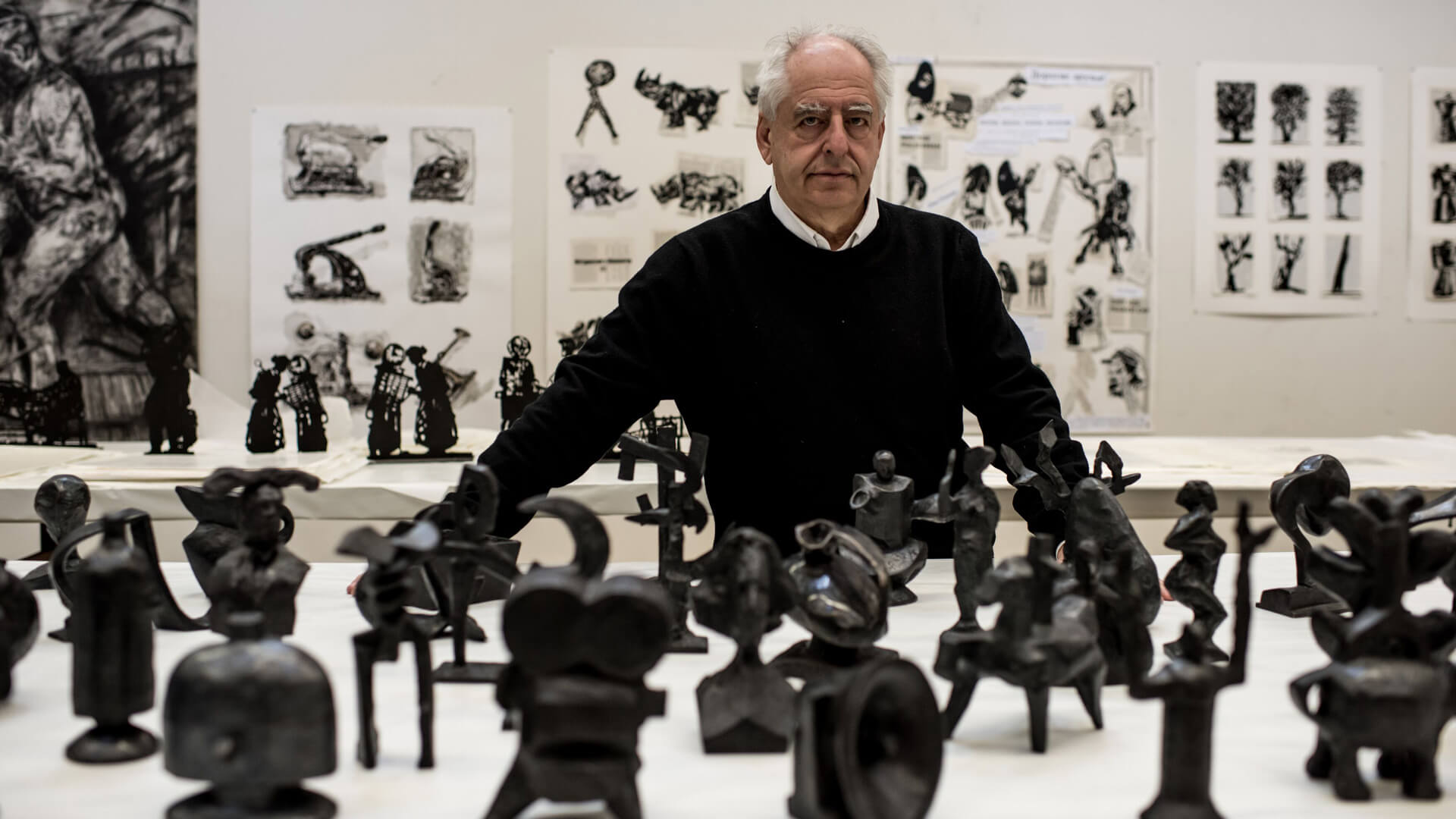
About the artist
One of the most prominent artists working today, William Kentridge was born in 1955 in Johannesburg, South Africa, where he currently lives and works. Growing up under the destructive pall of apartheid and as the son of human rights lawyers, Kentridge developed a strong sense of social responsibility from an early age. Over the past five decades, his practice has parsed and questioned the historical record—responding to the past as it ineluctably shapes our present—and, in doing so, has created a world that both mirrors and shadows the inequities and absurdities of our own. By employing varied media, the artist seeks to make sense of the world and the construction of meaning through the use of historical resources, including maps, language and everyday imagery.
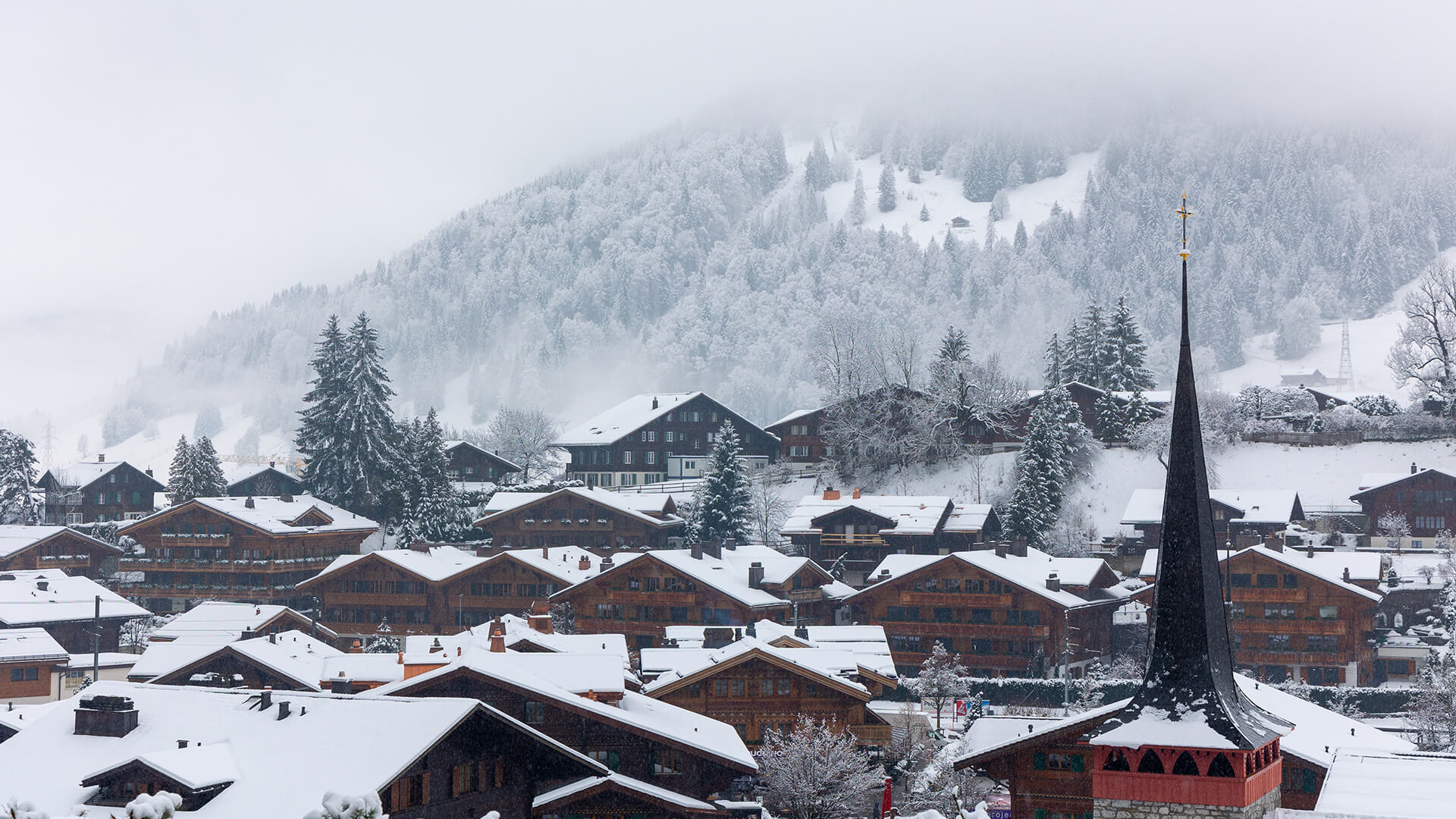
On View in Gstaad
This winter season, the gallery has collaborated with the Gstaad Palace to present two large-scale outdoor sculptures by Kentridge, titled ‘Cape Silver’ (2018) and ‘Her’ (2022). ‘William Kentridge. Singer Solo’ is currently on view both at Tarmak22, Gstaad and Gstaad Palace through 5 February 2023. Please visit our location page or contact our team to learn more.
Installation view, ‘William Kentridge. Singer Solo,’ Gstaad Palace, Gstaad, Switzerland, 2022 – 2023 © William Kentridge. Photo: Jon Etter William Kentridge, Cape Silver, 2018 © William Kentridge. Photo: David Southwood Portrait of William Kentridge © William Kentridge. Photo: Stella Olivier
[1] William Kentridge, ‘Cursive,’ Kentridge Studio, https://www.kentridge.studio/cursive/ (accessed 14 December 2022). [2] William Kentridge, Interview with Hauser & Wirth, Personal Interview, London, January 2022. [3] ‘Lexicon, Paragraph I’ (2017), Musée cantonal des Beaux-Arts de Lausanne, https://www.mcba.ch/en/collection/lexicon-paragraph-i/ (accessed 8 November 2022). [4] William Kentridge, Interview with Hauser & Wirth, Personal Interview, London, January 2022. [5] William Kentridge, Interview with Hauser & Wirth, Personal Interview, London, January 2022. [6] William Kentridge in Owen Martin (ed.), ‘Why Should I Hesitate. Sculpture. William Kentridge,’ Cape Town/ZA: Norval Foundation; London/UK: Koenig Books, 2019, pp. 220-222.
